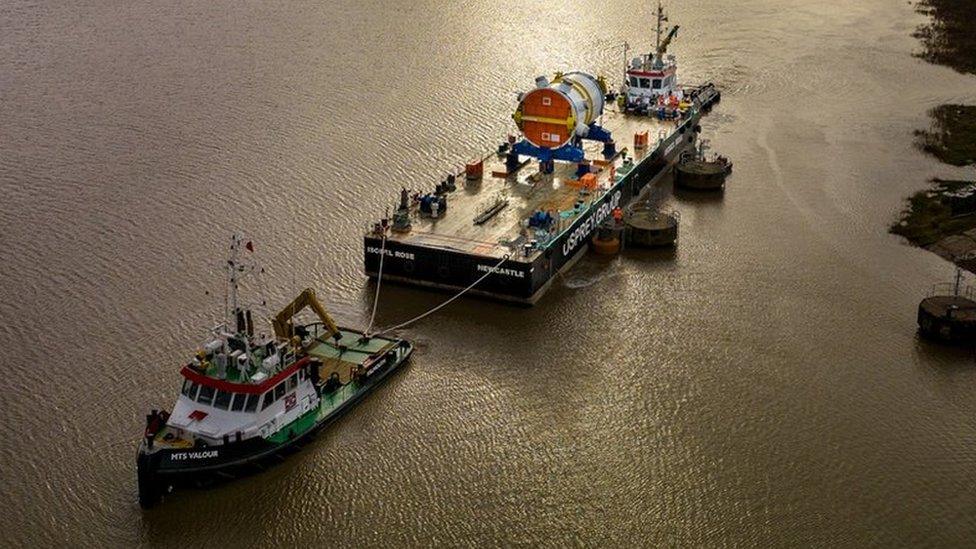Reactor installed at UK's newest nuclear power station
Hinkley Point C: Major milestone hit in building UK's newest nuclear power station
- Published
Workers have fitted a reactor into the first nuclear power station to be built in Britain for 30 years.
Hundreds of engineers and construction staff worked for several days to lift the 500-tonne steel equipment into place at Hinkley Point C, near Bridgwater, Somerset.
"It was a huge operation for all the teams involved," said Matt Abbott, who led the team installing it. "This is the heart of the plant."
The 13m-long (42.6 ft) unit is one of two reactors which will contain the nuclear chain reaction that will generate enough power for six million homes, when it opens in 2030.
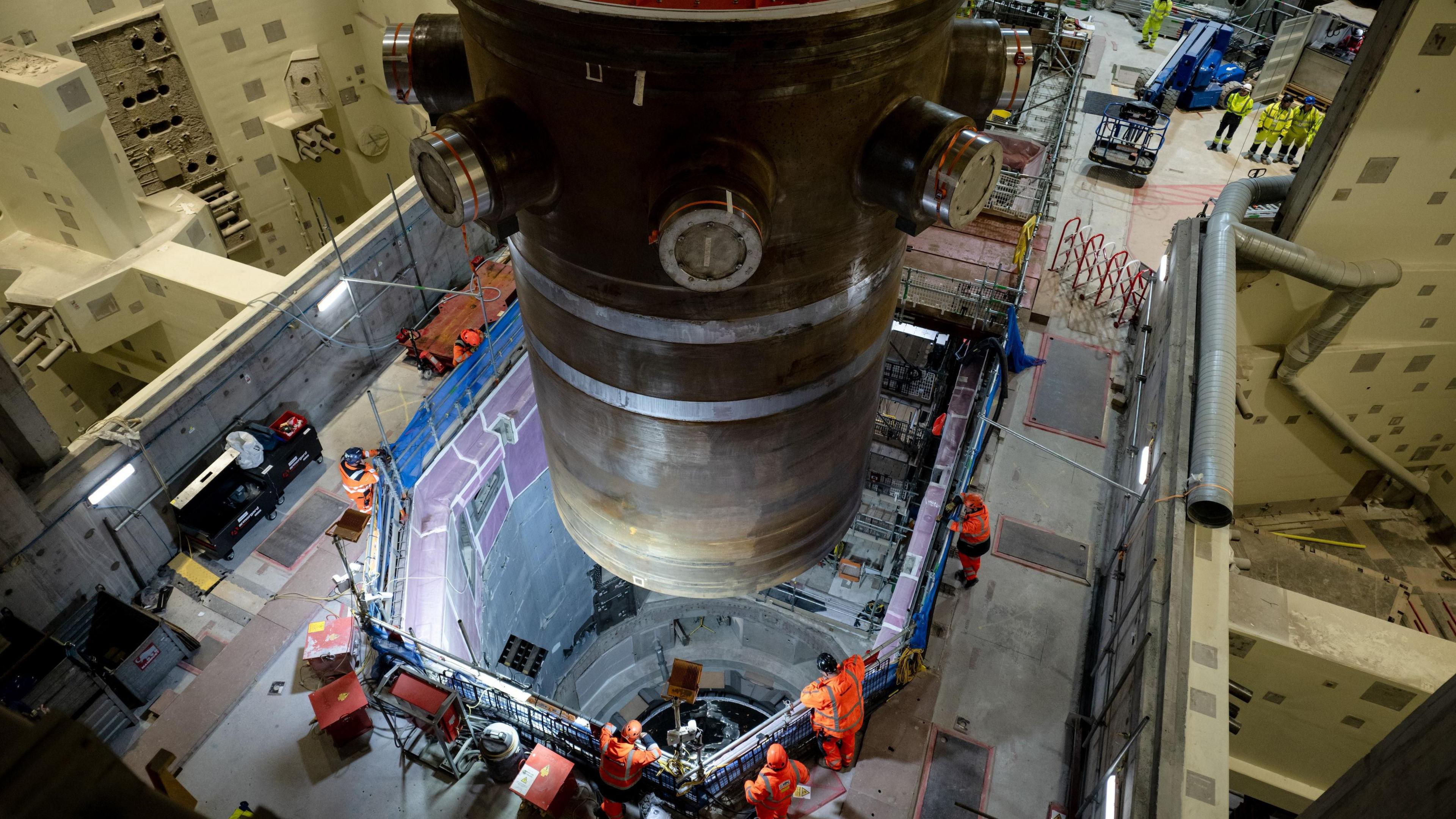
The 500-tonne steel nuclear reactor is lowered into position at Hinkley Point
The giant steel cylinder was winched up the side of the reactor building in a 12-hour operation.
It then had to be manoevered along rails through a giant equipment hatch, rotated through 90 degrees and lowered carefully onto a prepared base.
It will stay there for 60 years of nuclear operation, and decades beyond.
Energy Secretary Ed Miliband called it "a major step forward".
He said: “Getting Hinkley up and running to produce clean power for six million homes will be a win for our long-term energy independence."
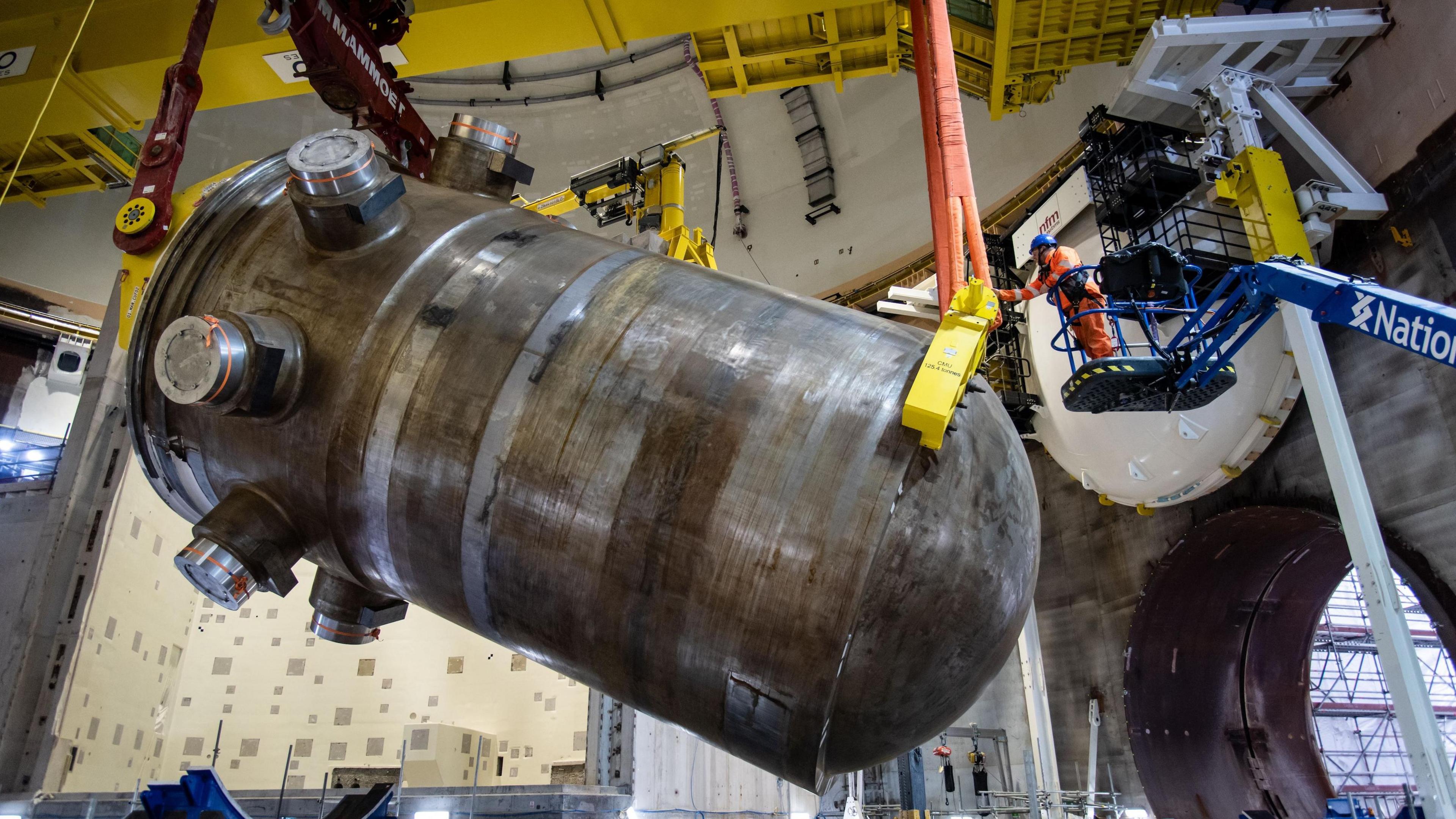
The 13-metre long cylinder was flipped in mid-air by a purpose-built crane, then lowered into position.
At least 12,000 people work there, alongside more than 100 cranes. The reactor will power 25m high steam generators, and drive turbines featuring the longest blades ever made.
Yet the project has been delayed by political debates, the Covid pandemic and supply chain problems.
It is now due to open five years later than originally planned. The estimated cost has risen to £46bn from the £18bn predicted in 2017.
Nonetheless, installing the reactor is a significant milestone.
So how does it work, who made it, and when will they switch it on?
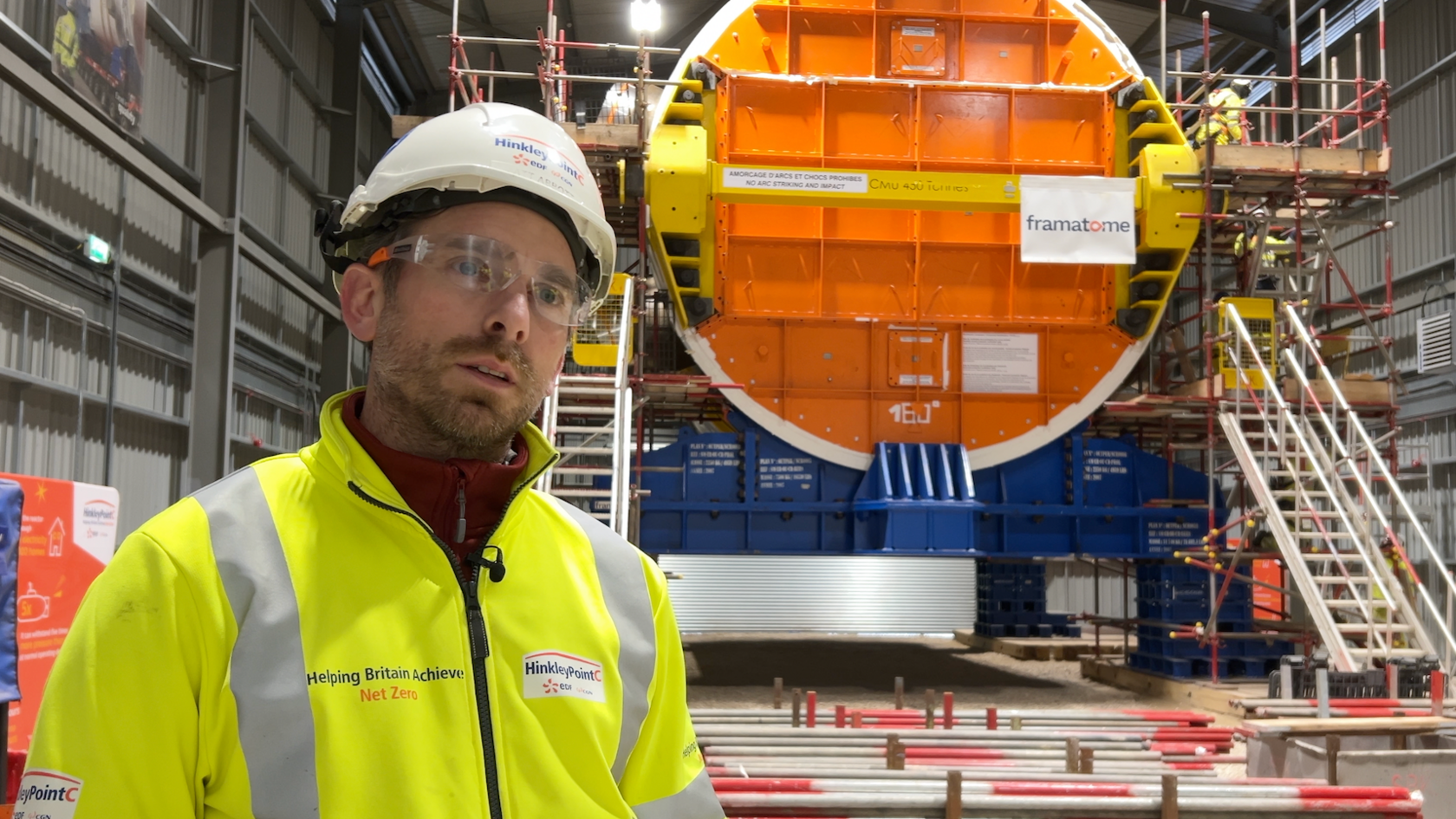
Matt Abbott led hundreds of construction workers who lifted the "heart of Hinkley" into place
How does it work?
The reactor is known as "the heart of Hinkley".
It will contain radioactive uranium split by nuclear fission, in a chain reaction which generates a lot of heat.
Temperatures inside will average 300C. Pressure will reach 155 bar, five times more than on a submarine at normal operating depth.
The steel vessel is 25cm thick, 13m (42.6 ft) long, and weighs 500 tonnes.
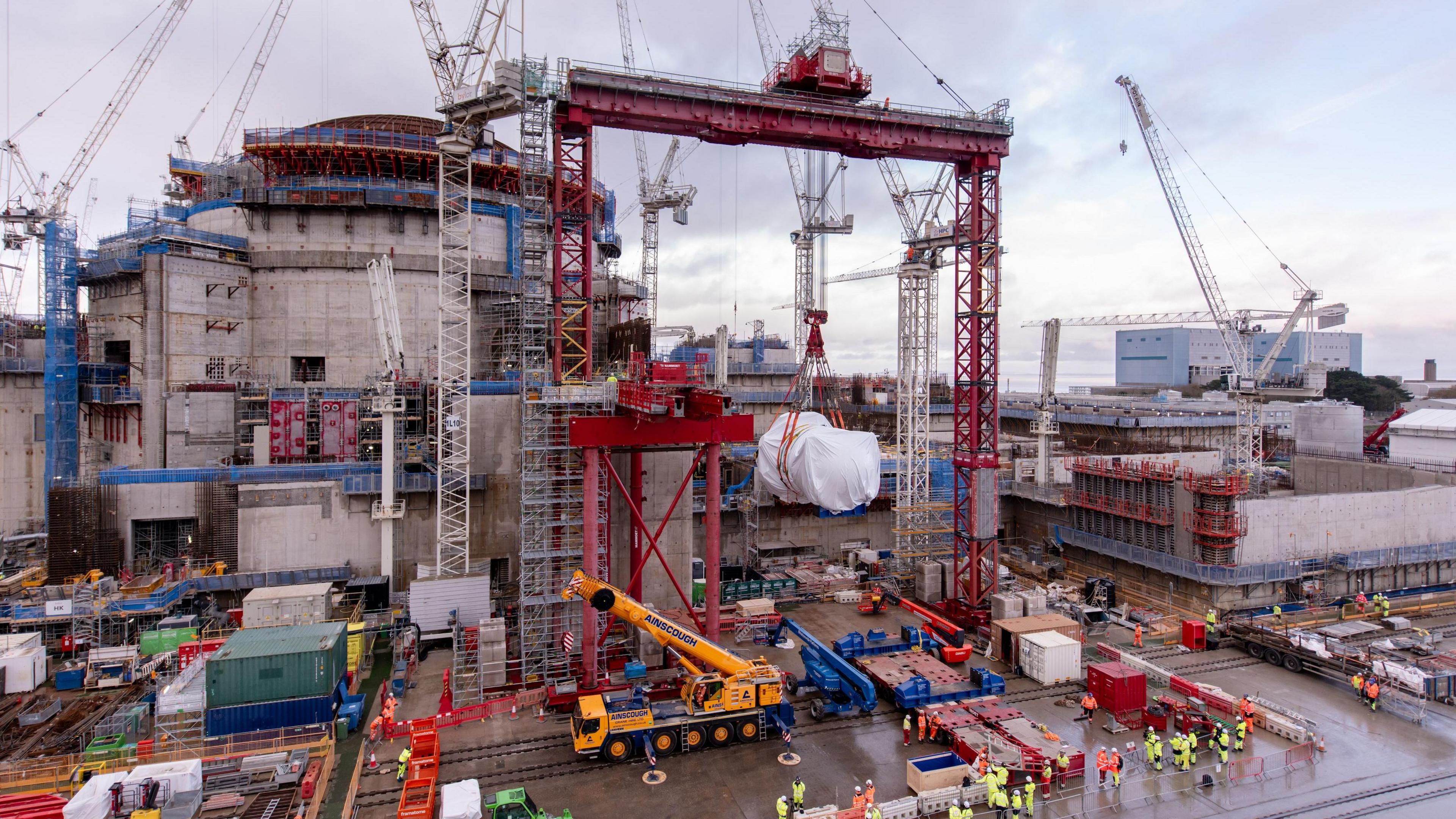
The reactor, shrouded in white, was winched up to a hatch on the building which will house it for more than sixty years
A closed loop of pressurised water will pass round the reactor, and heat up.
This heat will then be exchanged with a second loop of water, which turns into steam. The steam will drive turbines which generate Hinkley's electricity.
Mr Abbott said: ''We’ve got two of these reactors, and each should power about three million homes. So it’s a massive deal and this is now the start of that journey for us."
Who made it?
The reactor took six years to manufacture and was made in France by a company called Framatome, which is owned by EDF, who are building Hinkley Point C.
EDF is owned by the French state.
Creating the reactor was a matter of "immense pride" for Framatome employees, according to Mathieu Gaulthier, who leads the company's team in Somerset.
But why did such a central component of Britain's first new nuclear power plant for a generation have to be made abroad?
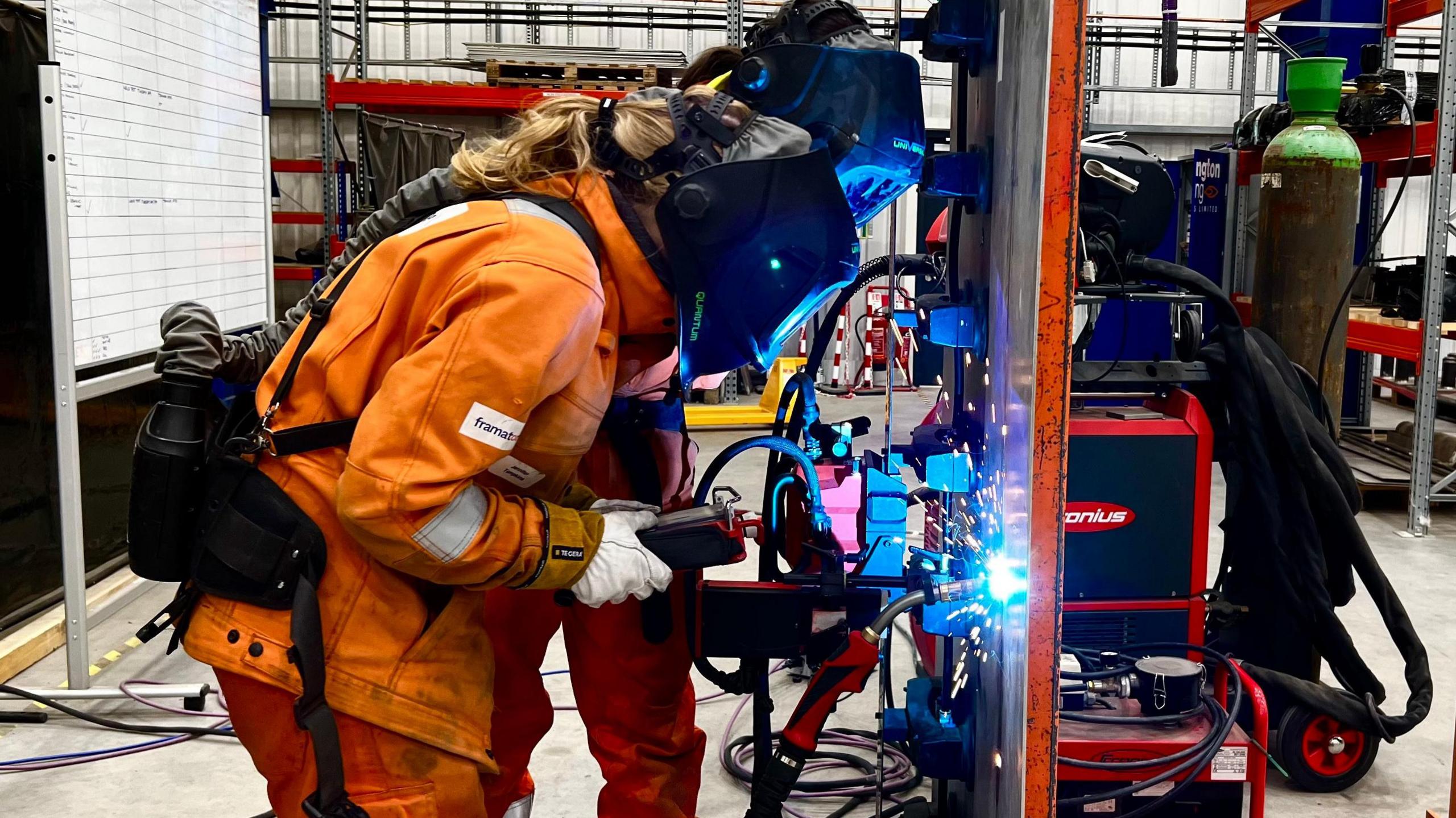
Jennifer Tompkins, an apprentice welder at Framatome UK in Avonmouth, operates a high-tech semi-automated welding machine
“The last nuclear reactor that was built was finished in 1991," Ian Henderson, head of Framatome UK.
"In that time that skill base has disappeared."
The firm is now trying to change that.
At a brand new factory in Avonmouth, near Bristol, they are training high-level welders and fitters to the exacting standards of the nuclear industry.
For Hinkley C, they are fabricating tanks and other structures. But on future nuclear projects, they hope to take on more sophisticated jobs.
Mr Henderson explained: "It's taken quite a few years to build those skills up to where they are today, and we want to keep that going, keep investing.”
When will they switch it on?
In 2007 EDF's French leader Vincent de Rivaz predicted Britons would be cooking their Christmas turkeys on Hinkley power 10 years later.
In fact, 2017 was the year M. de Rivaz left EDF. In Somerset, work had only just begun.
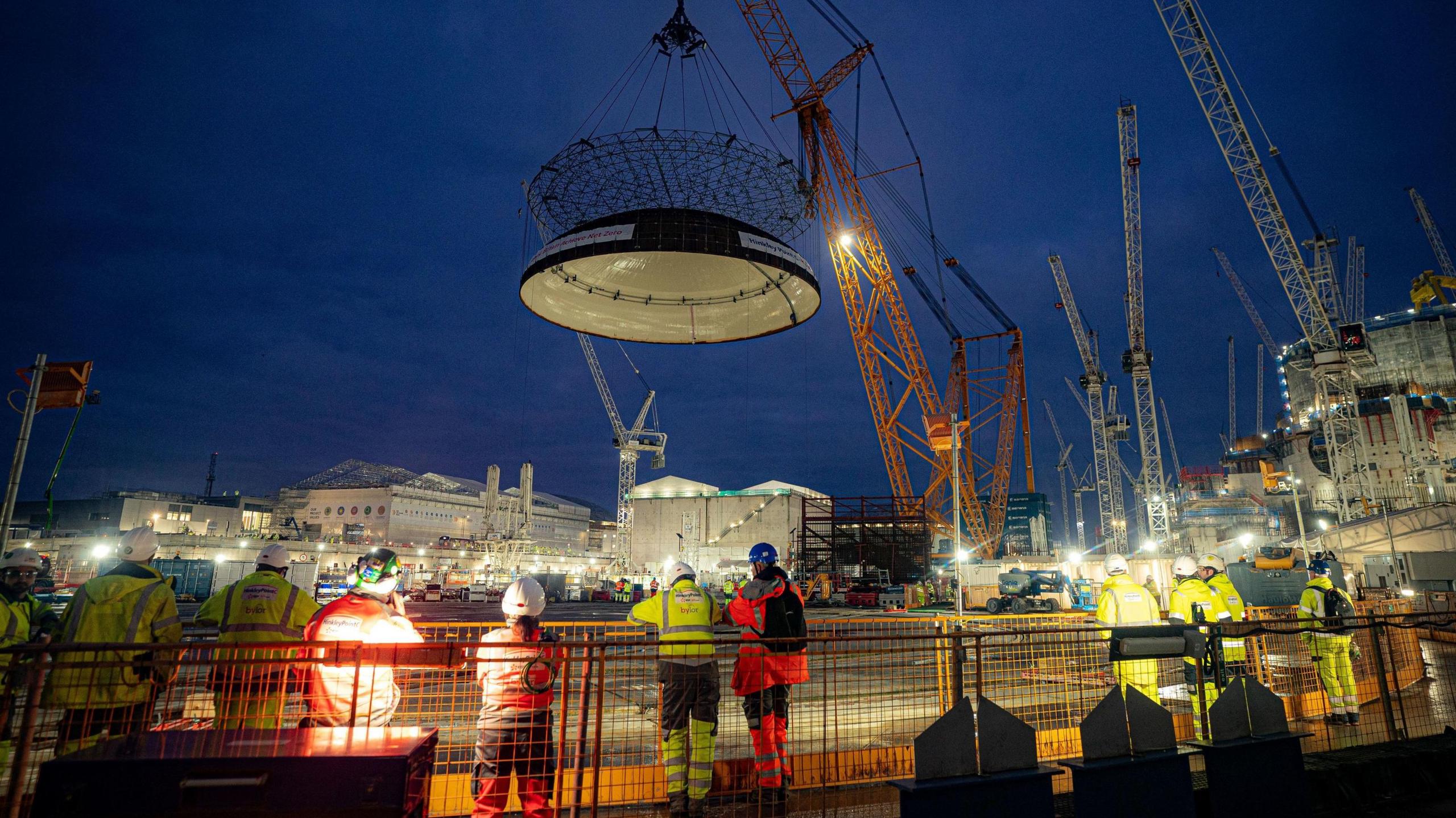
Engineers use the largest land-based crane in the world to lift the dome roof onto the reactor building in December 2023
As the first concrete was poured, the company said they would switch it on by 2025.
But that was followed by global pandemic, a war in Ukraine and disruption to global supply chains.
Now, the company expects to begin power generation by "the end of the decade".
Getting the nuclear reactor into position represents a big milestone passed.
Get in touch
Tell us which stories we should cover in Somerset
Follow BBC Somerset on Facebook, external and X, external. Send your story ideas to us on email or via WhatsApp on 0800 313 4630.
Related topics
- Published23 January 2024
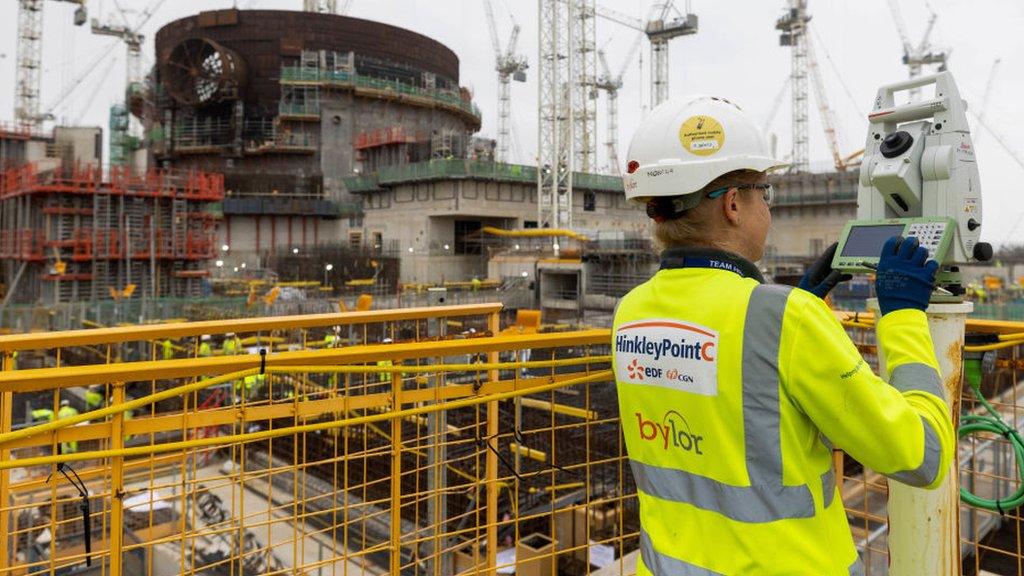
- Published15 December 2023
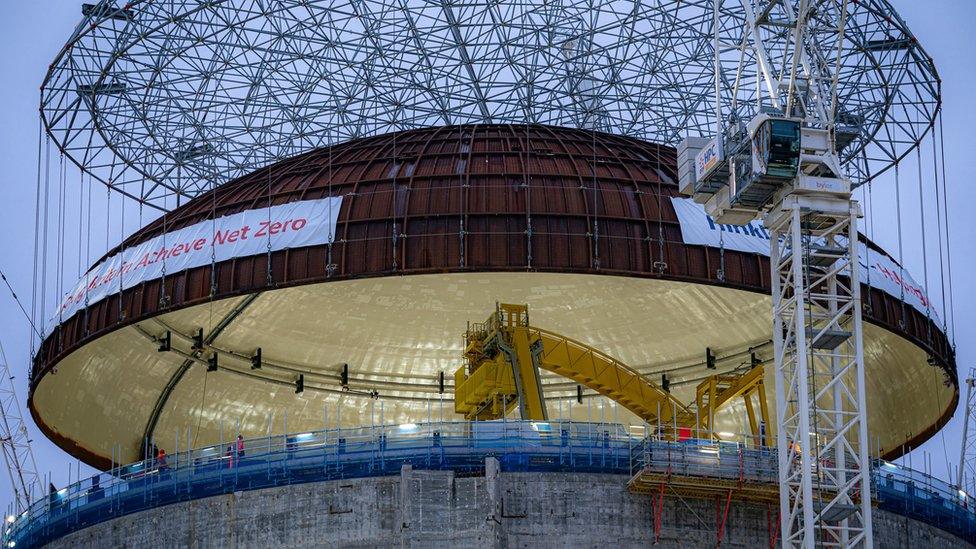
- Published27 February 2023
